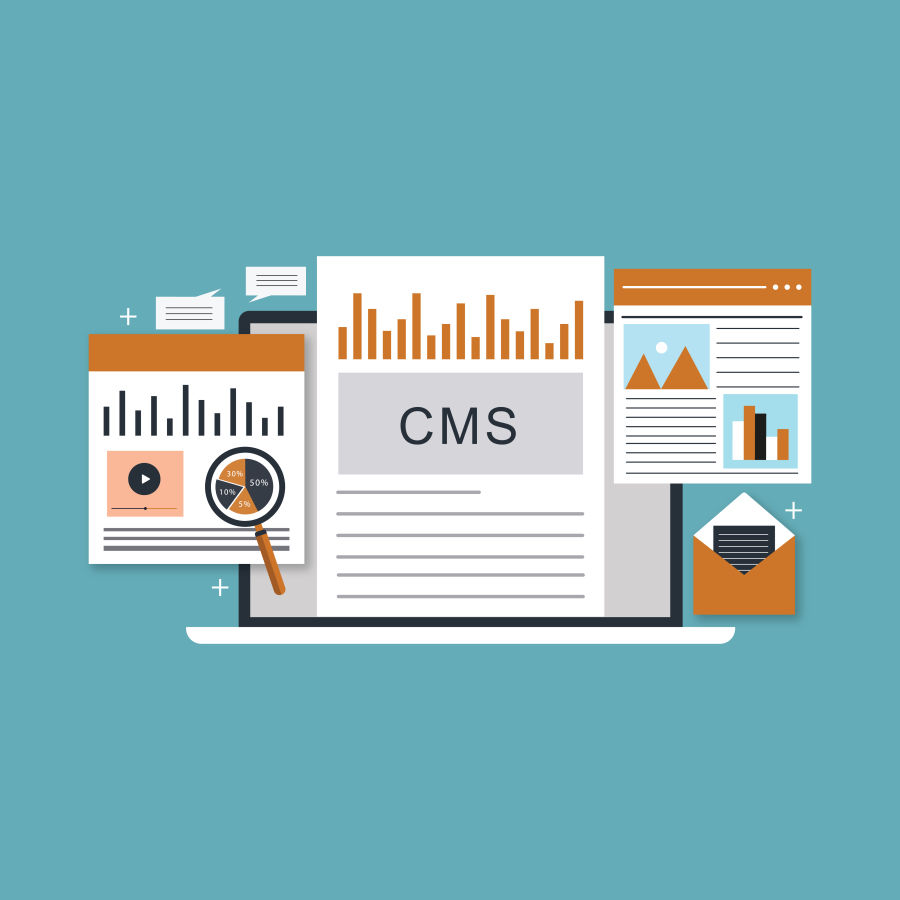//
Nov 21, 2023
From Bounce to Buy: B2B Web Design Best Practices for Conversion and Retention
As a business owner in this competitive market, staying ahead is no easy task.
But here's something you might not have realized yet – integrating B2B web design best practices can be a secret weapon that sets your business apart from the competition.
Why?
It’s really simple: your website is the primary source of information for leads considering your services.
In today's , there are five B2B web design best practices that have become indispensable.
- User Experience (UX) Design
- Optimization of the User Journey
- Call-to-Actions that Drive Action
- Intuitive Navigation and Ease of Use
- Mobile-friendly and Responsive Design
The five above practices help you create a website that builds trust, informs your audience, and boosts your online presence. You can attempt the DIY approach to your website, but there's a more effective path.
Let’s explore key B2B web design best practices and how a can play a crucial role in your success.
It's time to unlock your website's full potential.
1. The Importance of User Experience (UX) in Web Design

is the linchpin of success. It's not just about aesthetics. It's about functionality, the overall interactions cultivated, and impressions your website leaves on visitors.
Positive UX design significantly impacts your conversion and retention rates, and it’s well worth the investment.
Check it out: How HubSpot Addressed ‘Design Debt’, Improved UX, and Boosted Conversions
To highlight the power of UX, take a look at the real-world case study where revamped its UX design and gained in a substantial increase in conversions:
Image Credit: HubSpot’s blog article, “How Redesigning HubSpot's Website Doubled Conversion Rates”
HubSpot.com encountered a common issue, referred to commonly as "Design Debt". "Design Debt" is where a website performs well quantitatively but falls short of providing an excellent user experience (UX) due to lack of innovation, refactoring, or development.
In response, they embarked on a mission to refine their UX design to increase conversions.
Recognizing the importance of consistent design and smoother navigation, they aimed to the conversion process for better results.
Their journey started with research and talking to users to guide their design choices. They also tried different design elements like illustrations and videos to engage users better. When they redesigned about 130 pages, signups for their product went up by 27 percent.
HubSpot.com's experience shows that research, testing, and using data can solve design problems, make the website better, and get more people to sign up.
2. Stay Agile and Flexible with Your Site
In the realm of B2B web design, optimization is the name of the game. It's the process of fine-tuning your website continuously to ensure it performs at its best.
Why?
Treating your site's design and content as a "set it and forget it" endeavor can be a recipe for missed opportunities and stagnant growth.
Optimization entails a dynamic approach. It means never resting on your laurels but instead adopting a mindset of ‘A.B.O’ (Always Be Optimized). This approach involves , iterating on what works, learning from the results, and adjusting accordingly.
Check it out: Improving Inside Baseball Consulting’s UX With Optimized Web Design
, a tech consulting firm, partnered with to revamp their website. They aimed to create a modern, user-friendly site, improve lead generation, and incorporate a Servant Leadership page. The project included research, design, and development.
Optimization transformed Inside Baseball Consulting's site into a with content tailored for lead generation and SEO.
Features like responsiveness, speed, interactiveness, and videos created synergies that enhance user experience and pave the way for successful branding.
Positive feedback highlighted improved customer satisfaction and enhanced brand credibility, aligning with their mission to empower tech professionals.
These optimizations solidified Inside Baseball's industry leadership, unlocking new business opportunities.
3. Harnessing the Power of CTAs: Elevating Your "Silent Salesperson"

CTAs, or you Call to Actions, nudge your website visitors in the right direction of a desired action. They can be things like buttons, links, images, and more.
Here’s what you’ll need to create effective CTAs:
- Know Your Audience: Understand your target audience's needs and desires to create effective CTAs.
- Use Clear, Action Words: Make short, action-oriented CTAs like "Download Now" or "Request a Demo." Create urgency with phrases like "Limited Time Offer."
- Strategic CTA Placement: Position CTAs where they matter most, such as the homepage and product pages.
- Stand Out Visually: Use colors, bold fonts, or eye-catching buttons for your CTAs.
- A/B Test for Improvement: Experiment with different CTAs through A/B testing.
By crafting compelling CTAs that resonate with your audience, you can significantly boost your website's conversion rates. Keep it clean, action-packed, and strategically placed to guide your visitors.
Check it out: Real Examples of CTAs That Work
Hey, you’re busy, so we won’t reinvent the wheel here. Our partner, Hubspot, has given excellent examples of web design CTAs that work!
4. User-Friendly Navigation: Enhancing the Journey
Consider simple navigation a well-marked path in a bustling crowd; it guides users seamlessly through your website. In this section, we will delve into crafting uncomplicated navigation to enhance the user experience.
Why Easy Navigation Matters
The simpler the navigation, the more time users spend on your site. More extended visits increase the chances of conversion, whether making a purchase, subscribing, or reaching out.
If users can't find what they want, they'll leave in frustration.
Tips for Crafting User-Friendly Navigation
- Straightforward Menu: Avoid overcrowded menus. Use clear labels and an organized structure. Complex menus drive users away.
- Highlight Key Content: Prioritize essential sections and pages. Ensure quick access to vital areas.
- Consistent Placement: Keep the menu in the same spot across your site. Consistency reduces confusion and eases navigation.
Check it out: The Consequences of Poor B2B Website Navigation

Until now, we've praised B2B companies with great web design.
Now, let's look at what happens when a B2B company underestimates the importance of navigation, thinking it's only crucial for e-commerce businesses.
- High Bounce Rates: Visitors leave your site quickly due to frustration from not finding what they need, resulting in a high bounce rate.
- Lost Leads: Potential clients can't find the info they want and leave without taking action.
- Negative User Experience: Difficult navigation deters users and harms your brand's reputation.
- Low Conversions: Poor navigation hampers your primary goals, such as lead generation or sales.
- Missed Opportunities: Valuable content or products go unnoticed, causing you to miss growth chances.
- Competitive Disadvantage: If your site is hard to navigate, visitors might choose competitors with better user experiences.
In a world where users expect intuitive website navigation, having a B2B site with poor navigation can result in lost leads, diminished user experience, low conversions, and, ultimately, lost business opportunities.
It's vital to prioritize user-friendly navigation to prevent these adverse outcomes and stay competitive in your industry.
5. Going Mobile: The Need for Responsiveness
With the ever-growing dominance of mobile devices in the digital realm, the significance of mobile responsiveness cannot be overstated. In this section, we will take a closer look at the pivotal role of mobile responsiveness in shaping the success of your B2B website.
Specifically, we will explore how it directly impacts two crucial aspects: conversions and user retention.
Ensuring your B2B website is mobile-friendly and responsive offers several key benefits:
- Expanded Reach: Reach a broader audience by catering to mobile users.
- Enhanced User Experience: Provide a smoother, more enjoyable experience for visitors, encouraging them to stay and convert.
- Credibility Boost: Build trust with clients by presenting a professional image.
- Faster Loading: Optimize for speed, reducing bounce rates and boosting conversions.
- Seamless Conversion: Ensure easy mobile conversions, leading to more actions taken.
In essence, mobile responsiveness leads to a broader reach, a better user experience, trust-building, faster loading times, improved conversions, higher search rankings, consistent branding, and less bounce, contributing to increased conversions and user retention.
Smart Web Design for B2B Best Practices for Retention, Conversion, and Success

We understand the vital role web design and strategy play. Your website is more than just a digital space; it's the bridge to connecting with potential leads and clients and engaging existing customers.
By embracing B2B web design best practices like UX design, optimization, compelling CTAs, intuitive navigation, and mobile-friendliness, you'll not only boost your chances of converting and retaining leads but also create a more welcoming online experience for your audience.
Ready to Enhance Your B2B Web Design? Contact Watermark Agency!
Get in touch with Watermark Agency today to boost your B2B website. We specialize in web design solutions to elevate your business in the digital realm.
Don't miss this opportunity to improve your website. to take your B2B web design to new heights!







